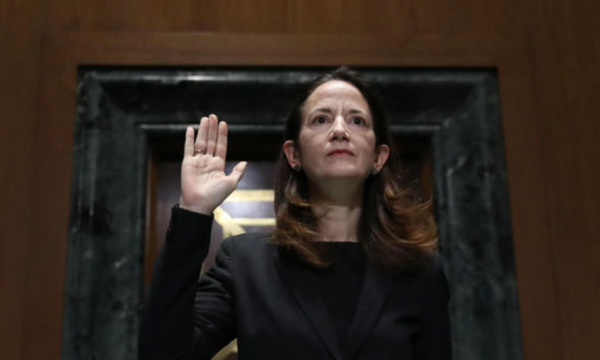INSA Op-Ed: Six Priorities to Revitalize National Intelligence
In this January 29 Op-Ed published in The Hill, INSA Chairman Letitia A. Long and INSA Vice President of Policy Larry Hanauer, outline key steps the new Director of National Intelligence can take to help revitalize the Intelligence Community.
In a strong display of bipartisanship, the Senate confirmed Avril Haines as the director of national intelligence by a vote of 84-10. The broad support from both parties attests to Haines’s qualifications for the job and gives her a mandate to institute reforms that will make intelligence agencies more effective.
With Haines at the helm, the new administration has an opportunity to revitalize the intelligence community and bolster its ability to address the nation’s most pressing challenges.
First, the intelligence community must provide decision makers with analyses that are objective and free from political influence must provide decision makers with analyses that are objective and free from political influence. The previous administration placed the nation at risk and undermined workforce morale by pressuring officials to toe the line on politicized issues like Russia and election security, as reported by the Office of the Director of National Intelligence’s intelligence community analytic ombudsman.
Haines has promised to speak truth to power even when the message is inconvenient, stating at her confirmation hearing, “When it comes to intelligence, there is simply no place for politics — ever.”
Second, intelligence agencies should build on actions that enabled them to operate effectively during the pandemic. The intelligence community should accelerate the deployment of secure remote technologies, such as those piloted by the Air Force and the Army, that enable employees to connect securely to classified systems when staffing limits prevent them from working at secure sites. Agencies can also identify more tasks that can be performed at the unclassified level, as the National Geospatial-Intelligence Agency has done, to facilitate telework, make use of publicly available information and allow agencies to engage new hires waiting for security clearances.
Additionally, as federal agencies receive COVID-19 vaccines, the intelligence community should develop a community-wide policy on vaccine deployment to ensure the total workforce is protected — as the Defense Department ordered in early January. Thousands of people continue reporting to work to perform critical national security missions and the virus doesn’t care what color badge they wear.
Third, the intelligence community must proactively address new and emerging threats, particularly foreign propaganda, disease outbreaks and domestic extremism. The intelligence community needs a ‘disinformation czar’ to coordinate efforts to understand and mitigate foreign information operations and their impact on American society. While the intelligence community monitored election interference, other forms of disinformation — including social media campaigns to magnify existing political and social divisions — also have a pernicious impact on American society.
The pandemic demonstrated the importance of monitoring warning signs of global health crises, some of which the intelligence community is uniquely positioned to detect and assess. President Biden’s Jan. 21 directive that the intelligence community enhance its pandemic-related capabilities — including, potentially, creating senior ODNI positions to coordinate collection and analysis regarding biological threats and global public health — empowers the DNI to make health security a top priority for the intelligence community.
Intelligence agencies must improve their understanding of domestic violent extremists, whom the Department of Homeland Security assessed in October are “the most persistent and lethal threat in the Homeland.” The comprehensive threat assessment that Biden directed the DNI to conduct on his third day in office will provide a critical foundation for further efforts. In light of reports that active-duty military personnel, veterans and others who hold (or once held) security clearances were involved in the Jan. 6 assault on the Capitol, the DNI’s security executive agent team should review whether the clearance process is sufficiently rigorous to identify trusted employees’ associations with violent anti-government groups or activities.
Fourth, the intelligence community should expand robust collaboration with the private sector. Advanced sensors improve clandestine collection and artificial intelligence and machine learning technologies help the intelligence community make sense of massive amounts of information. Close partnership with industry could streamline protracted acquisition processes and help companies develop solutions to the community’s toughest challenges.
Fifth, having learned to work more effectively in the unclassified domain during the pandemic, every intelligence community component should make better use of open source information. The community should develop standardized open source tradecraft, update policies governing acquisition and use of publicly available information, including social media and continue to work with industry to develop high-powered analytic tools.
Lastly, the intelligence community must diversify its workforce. The Government Accountability Office reported in December that the intelligence community failed to meet federal workforce goals for representation of women, minorities and people with disabilities. Biden’s executive order on advancing racial equity throughout the federal government is an important step toward this goal. If the community is to understand foreign cultures and bring varied perspectives to its assessments, it must build a workforce that reflects the nation it serves.
These challenges are complex and cannot be solved with the stroke of a pen. But empowered by the confidence of the president, bipartisan congressional support and four years (if not more) to take action, Haines is well positioned to make the intelligence community more capable, more diverse and better prepared to address the most pressing threats to the nation’s security.
Letitia A. Long is the former director of the National Geospatial-Intelligence Agency (NGA) and chairman of the Intelligence and National Security Alliance (INSA), an association promoting public-private collaboration on intelligence matters. Larry Hanauer is INSA’s vice president for policy.

